#MinivanSales
Could Minivans Become Popular Again?
While often derided as highly unfashionable, minivans really are the Swiss Army knife of vehicles. They’re people haulers, cargo carriers, mobile campsites, and can even improvise as work vehicles for when a utility van (the Leatherman of vehicles) is unavailable. Minivans also drive more like cars than the brutes occupying the SUV and pickup segment, making them easier for some drivers to live with.
With vans having enjoyed a cultural renaissance during the 1970s, minivans hit the ground running in the mid-1980s and continued to swell in popularity until the millennium. By then, North Americans were buying an estimated 1.5 million minivans a year. But that’s also where society decided to apply the brakes. Sport utility vehicles and crossovers have effectively supplanted the van as the default family conveyance — though recent sales figures have suggested those dying flames are now being rekindled.
Minivan Market Share Is Now at 2 Percent In America, and It's Rapidly Getting Worse
Sales of minivans in the United States in 2019 plunged below Great Recession levels as every member of the existing quintet reported sharp year-over-year declines.
The 408,982 sales produced by the Dodge Grand Caravan, Chrysler Pacifica, Honda Odyssey, Kia Sedona, and Toyota Sienna in calendar year 2019 were a far cry from the 1.1 million sales produced by the sector in 2005, or even the 553,506 sold three years ago. But after hovering just below or above 3 percent of the market for half a dozen years, and after overall volume showed signs of recuperation through the middle half of the last decade, the segment’s 2019 collapse suggests we haven’t reached bottom yet.
At the current rate of decline, America won’t even acquire 300,000 minivans next year.
It’s a shame.
American Minivan Sales Plunged to a 32-Month Low in September 2017
Minivan sales tumbled 16 percent to only 33,358 units in September 2017, the lowest total for America’s people-carrier sector since January 2015.
Between the disappearance of two nameplates (Nissan Quest and Mazda 5), limitations on Dodge Grand Caravan sales during a period of plant transition, and further decreases from the aging Kia Sedona and new Honda Odyssey, minivan volume fell 6,460 units below September 2016’s total and nearly 11,000 units shy of September 2015’s tally, and more than 10,000 units short of 2017’s monthly average through the first two-thirds of the year.
A positive spin is difficult to find.
No Thanks to the New Honda Odyssey, U.S. Minivan Sales Increased In August 2017 for Just the Second Time in a Year
It’s all about product, they say.
Product, product, product.
When in doubt, add product.
New product, they say, will reinvigorate the American midsize sedan categor y. New product, one might have imagined, would provide an ample boost to America’s minivan segment.
Yet in August 2017, only the third month on the market for Honda’s fifth-gen 2018 Odyssey, overall minivan sales increased for just the second time in a year despite another sales decline from that very same new product, the Honda Odyssey.
Canadians Are Falling Head Over Heels in Love With the All-new 2018 Honda Odyssey, As They Should
In the 2016 calendar year, the Honda Odyssey was Canada’s 41st-best-selling vehicle.
In the first half of 2017, as the fourth-generation Odyssey’s tenure came to an end, the Honda van plunged 11 positions to 52nd. Odyssey sales were down 18 percent, year-over-year. Odyssey volume was on track to fall to a five-year low. Hashtag minivans dead.
Then, descending from the top of Mount Fuji with a Soichiro-shaped halo, hosting enough seats for the entire Odyssey SCCA pit crew, declaring 30 more horses than the original Acura NSX, equipped with enough gears in its transmission for 2.5 copies of the Toyota Yaris, and speaking with just enough of an Alabama twang to be authentically North Americanized, the 2018 Honda Odyssey appeared.
Canadian sales of the Honda Odyssey consequently rose to the highest level in 15 years. And so shall it ever be.
After a Dreadful Start, 2017's Second Half Is the Minivan's Time To Shine - but Can the Segment Recover?
The 2018 Honda Odyssey went on sale three weeks ago. The Chrysler Pacifica has only been on the market for a year. The Toyota Sienna will enjoy another refresh for the 2018 model year.
If ever there was a time in which America’s minivan segment needs to shine, the second-half of 2017 is it.
Minivan sales tumbled 14 percent, year-over-year, through the first five months of 2017. Only 3 percent of the auto industry’s volume is now minivan-derived. Year-over-year volume decreased in nine consecutive months between August 2016 and April 2017.
There are far fewer competitors now than there were a decade ago. Therefore, the minivan market doesn’t need to produce the sort of volume it did a decade ago. However, minivan sales can’t continue to plummet, month after month after month.
Minivan sales need to rise. If they can’t do so now, then when? And if the segment can’t do it with fresh product from Chrysler, Honda, and Toyota, then who can supply the growth?
It's Official: The Nissan Quest Is Dead, Discontinued, Defunct, Cancelled
“The Nissan Quest has been discontinued for the U.S. marketplace.”
– Nissan Sr. Manager, Product Communications, Dan Passe
TTAC has been tracking the Nissan Quest’s failure in the U.S. marketplace for some time. Just ahead of Christmas last year, when it appeared as though the Quest was surely dead in the water, Nissan confirmed that there would in fact be a 2017 Quest.
But when tipped off by an industry insider last February, we noticed that Nissan was reporting higher-than-normal Quest sales despite lacking any meaningful inventory. That’s right — the 2017 Nissan Quest was essentially a fleet-only vehicle.
Most of us stopped tracking the story. After all, it’s a minivan, and a long-ignored minivan, in a market where buyers are currently turning away from minivan in droves. TTAC’s Corey Lewis didn’t quit, however. Like a dog with a bone, Corey discovered that the Quest was missing from NissanUSA.com. Under the Minivans & Vans section, there’s no minivan. We asked Nissan, not for the first time, whether the Quest is dead.
The Nissan Quest is dead. Gone. Expired. Terminated.
2017 Is Set to Be The Worst Year For Minivans Since The Depths Of Recession, Unless The New Honda Odyssey Makes Hay
U.S. minivan volume has decreased in nine consecutive months as the American minivan category lost 70,000 sales since August 2016, year-over-year.
As a result of the steady decline in a minivan segment that essentially features only five vans, 2017 is set to be the lowest-volume year for the category since 2009. At the rate achieved through the first one-third of 2017, Americans will purchase and lease only 452,000 minivans in 2017, just 2.6 percent of the overall market and only slightly more minivans than Americans purchased and leased when the overall industry collapsed to the lowest level in 27 years.
Or perhaps not. Fresh product is the carnauba wax bath balm for the soccer mom segment’s tired flesh. And a new 2018 Honda Odyssey is due at dealers in the coming weeks. (We’ll have a review of it next week.)
Is a new Odyssey the answer for America’s minivan woes?
Honda believes so.
Mini-MPVs Just Won't Hurry Up And Die Already
99.9 percent of the minivans sold in the United States in 2016 were (oxymoronically-titled) full-size minivans.
The Kia Rondo finished its brief one-generation U.S. run in 2011, having generated 73,100 total sales over the course of nearly five years.
Having produced more than 160,000 sales for Mazda USA, the Mazda 5 is likewise no longer part of the automaker’s U.S. lineup. Mazda 5 volume was essentially chopped in half between 2008 and 2014.
The Chevrolet Orlando arrived in North America with a decidedly Floridian name but never actually made its way to Florida, or the U.S. market as a whole. Having generated 12,038 Canadian sales, the Orlando quickly departed Canada after volume plunged 81 percent between 2012 and 2014.
Yet the Kia Rondo and Mazda 5 are still available in Canada. They’re alive and (un)well. And while “full-size minivans” claim 96 percent of Canadian MPV sales, Kia and Mazda just won’t give up on their genuinely mini minivans.
After a Hot Start, Minivans Tanked in 2016
There’s good news. And there’s bad news.
U.S. sales of minivans in 2016 rose 6 percent, year-over-year, to nearly 554,000 units.
Yet after shooting out of the blocks with a 23 percent increase through the first seven months of the year — partly a response to a slow start one year earlier — minivan sales tanked in the final five months of 2016.
Finally, Chrysler Pacifica Sales Took Off In September 2016
Transitioning from one model to the next isn’t always a straightforward task for automakers. Forecasting and assembling the outgoing model before retooling for the incoming model is not an exact science.
For the 2017 Chrysler Pacifica, Chrysler’s replacement for the Town & Country minivan, the task was not made any easier by the presence of a value-oriented competing model inside Fiat Chrysler Automobiles’ own fold. Through the first three-quarters of 2016, the Dodge Grand Caravan has set a pace that may end with the best calendar year of sales since 2012, if not 2007.
The Grand Caravan’s position atop the minivan leaderboard and the large number of Chrysler Town & Countrys that needed to be cleared out created uninspiring Pacifica sales numbers for the first few months of its life-cycle.
But Pacifica sales last month were 23-percent higher than in August, and the Chrysler Pacifica very nearly became America’s best-selling minivan in September 2016.
Only a matter of time?
Midsize Sedan Deathwatch #2: July Sales Tank, Makes August a Great Time to Buy a Midsize Car
Not Chris Isaak – 1995.
Minivans crumbled as the three-row utility vehicle took over, leaving a handful of nameplates to each produce healthy volume. TTAC’s claim earlier this week? Midsize sedans are now following the same track, crumbling as the smaller two-row crossover takes over.
Already, America’s fleet of midsize sedans is decreasing in size. We expect to see a greater reduction in the number of midsize offerings soon.
Midsize sedans desperately want you. But you, oh collective American consumer, are consistently desirous of fewer midsize sedans. The current crop of midsize nameplates does not uniformly possess the mettle to survive the current downturn, a downturn which quickly grew more severe last month.
U.S. sales of midsize cars plunged by 31,000 units in July 2016.
Midsize Sedan Deathwatch #1: One Only Needs to Examine the Minivan Segment for Guidance
A decade ago, Americans could buy minivans from Buick, Chevrolet, Chrysler, Dodge, Ford, Honda, Hyundai, Kia, Mazda, Mercury, Nissan, Pontiac, Saturn, and Toyota. In all, 14 brands fought for the attention of 1 million minivan buyers.
Zoom ahead to 2016 and the minivan market — unlike the Terraza and Uplander and Freestar and Entourage and Monterey and Montana and Relay — is not dead. Indeed, through the first six months of 2016 minivan volume is up 25 percent and this year is expected to be the best year of minivan sales since 2008. Chrysler, Dodge, Honda, Kia, Nissan, and Toyota — only six candidates spread across seven nameplates and five automakers — are each generating sufficiently healthy volume in a market that is roughly 40 percent smaller than it was a decade ago. Rather than more than a dozen nameplates each producing an average of 70,000 annual sales, the remaining players will attract an approximate average of 100,000 annual sales each.
TTAC believes it is the midsize sedan segment’s turn to revolutionize in the same manner. In fact, the revolution is already underway.
Minivan Sales Down By Half Over Last Decade, But All Is Well?
Minivan sales in America fell 8 percent to only 513,000 units in 2015, less than half the number of MPVs sold in the United States a decade ago. Yet the number of sales produced by the three biggest players, across four nameplates, are more than healthy enough to suggest Fiat Chrysler Automobiles is wise to reinvest in their Windsor, Ontario, plant and the all-new Pacifica van.
Of course, the degree of wisdom employed by FCA as the automaker goes about reinventing its van is up for debate. Switching from Town & Country to Pacifica? Leaving the Dodge Grand Caravan to lumber along in previous-gen form? Neglecting all-wheel-drive in a gaga-for-SUVs market? There are upsides and downsides to each of these decisions.
But FCA’s decision to stick with a segment from which Ford, General Motors, Hyundai and Mazda fled is a wise one. The minivan market is much, much smaller than it was a decade ago. But if half a million people in America want to buy a minivan every year, the automakers which historically controlled the sector will want to own as large a chunk of that market as possible.



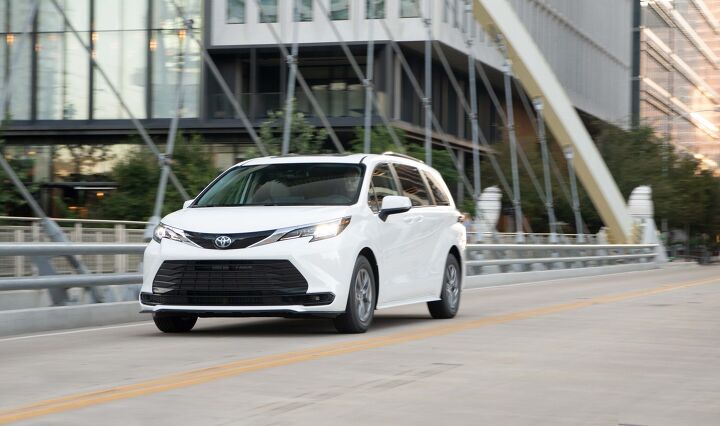

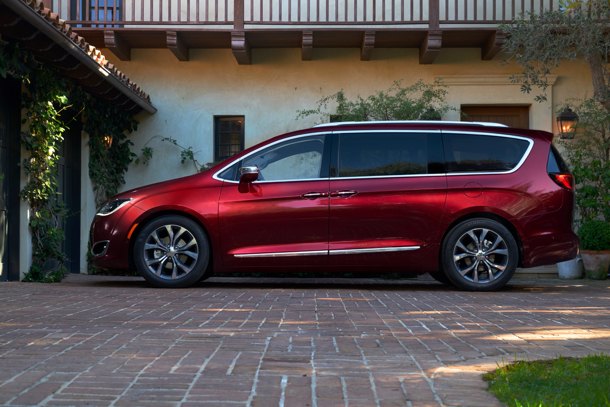

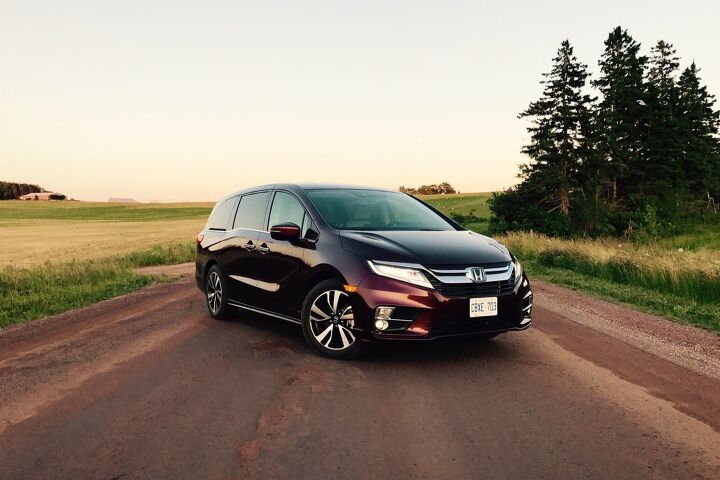
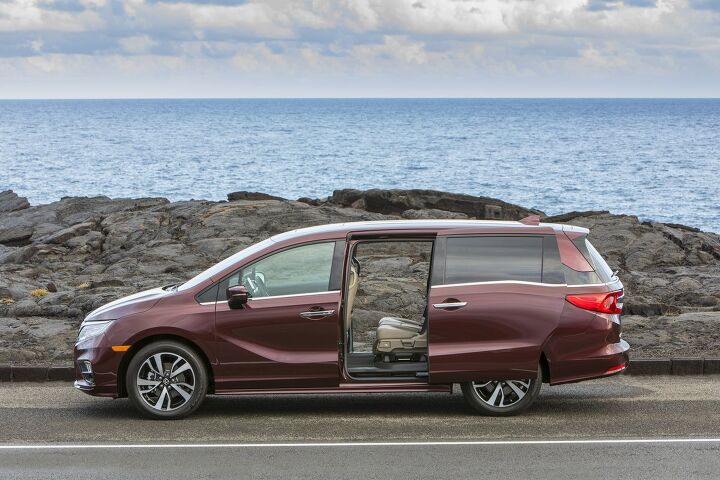



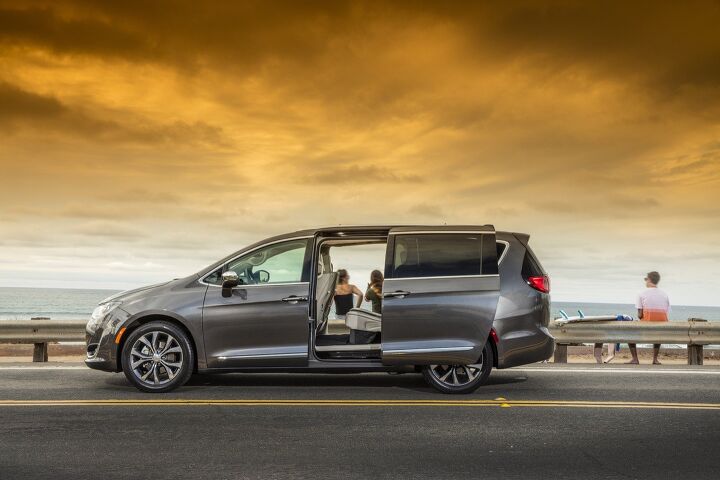
















Recent Comments